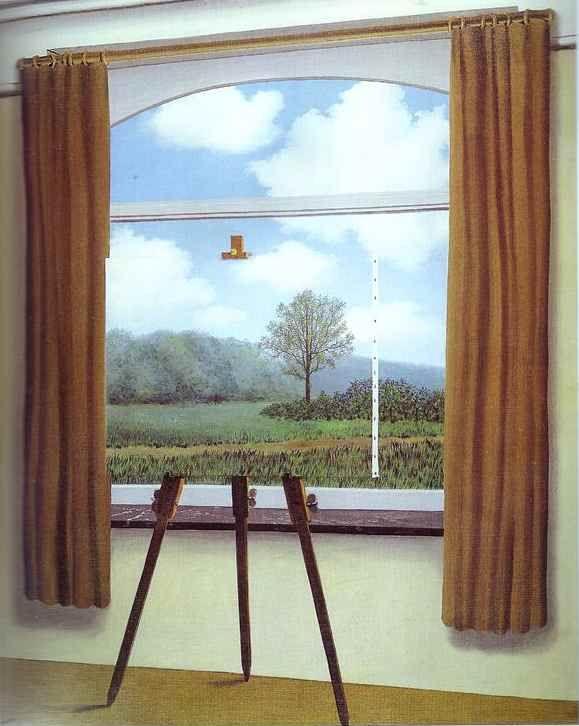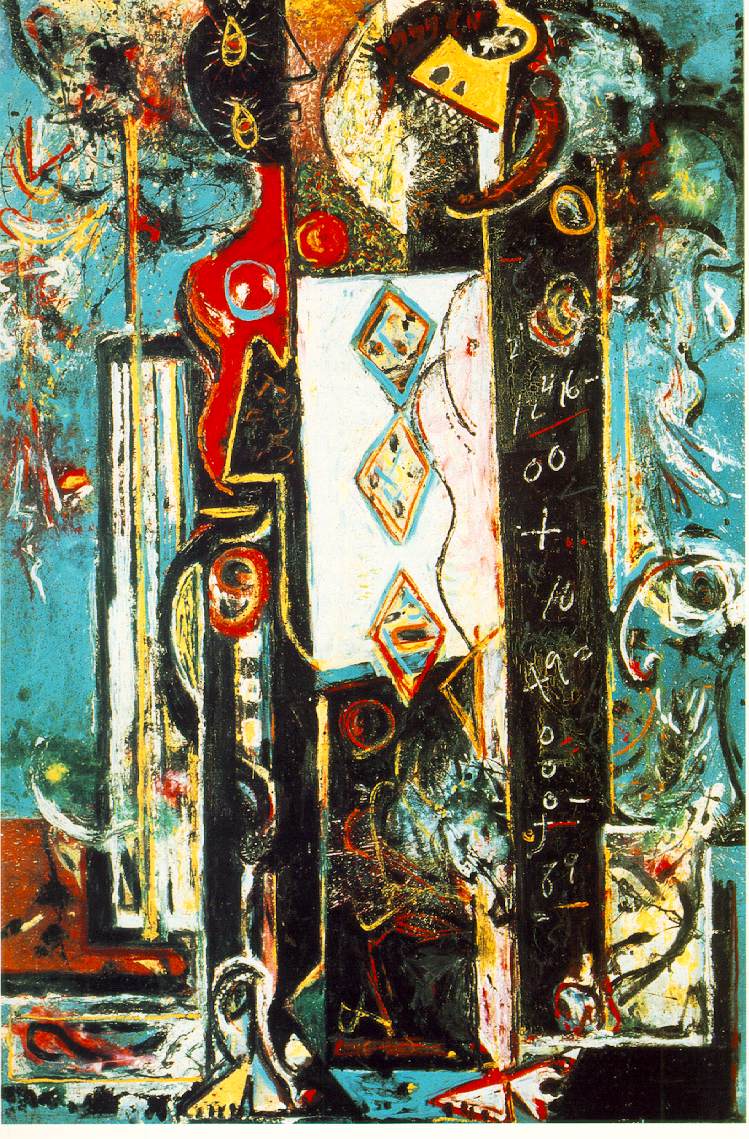Some artists appear to be inspired to do nothing more than take a tube of paint out of their paint box and squeeze it on the canvas. The rusult could hardly be called art.
Instead why not gaze upon your subject and take in all her beauty. Become inspired from deep down within your soul. Then when you are ready, select a brush and several tubes of paint and begin your creative work. Use different brush strokes. Try mixing paint in a way that will be pleasing and flattering to your subject. Take your time. Call on all of your talent and paint like this will be your last picture. Concentrate on making it a true piece of art that you will be proud of.
The result will be pleasing to both you and your subject.
- JohnMacnab
- 04-15-2011, 06:13 PM
- sofiaofhouston
- 04-21-2011, 09:00 AM
So your thoughts on Pollack? Art is subjective, no one can really define what is beautiful to another person....
- JohnMacnab
- 04-21-2011, 11:54 PM
Pollack's work has been analyzed with computers and found to be freehand fractal geometry. Only a true genius could have done that.
- boardman
- 04-22-2011, 08:43 AM
Fucking Awesome!!!


- dollydirtymoney
- 04-24-2011, 04:55 AM
art is very subjective. monet's works when he was going blind are the most beautiful to me of all his collection. when you see (or miss) something so stunning that you can paint it from memory with love, that is true inspiration.
- TheDaliLama
- 04-24-2011, 09:59 AM
Some artists appear to be inspired to do nothing more than take a tube of paint out of their paint box and squeeze it on the canvas. The rusult could hardly be called art.
Instead why not gaze upon your subject and take in all her beauty. Become inspired from deep down within your soul. Then when you are ready, select a brush and several tubes of paint and begin your creative work. Use different brush strokes. Try mixing paint in a way that will be pleasing and flattering to your subject. Take your time. Call on all of your talent and paint like this will be your last picture. Concentrate on making it a true piece of art that you will be proud of.
The result will be pleasing to both you and your subject. Originally Posted by JohnMacnab
Are you that curly haired guy that used to be on channel 8?

Bob Ross.....
I loved that guy!
- Wayward
- 04-24-2011, 10:29 AM
TDL once again gets to the very heart of the matter.

- Wayward
- 04-24-2011, 10:31 AM
This is more on topic


- sofiaofhouston
- 04-25-2011, 11:24 AM
Pollack's work has been analyzed with computers and found to be freehand fractal geometry. Only a true genius could have done that. Originally Posted by JohnMacnabFractal means broken, broken patterns? That is open to so many things.
That is the exact job of a computer......To find patterns of any sort...A computer should not analyze art......It cannot detect beauty......Unless you define beauty in purely mathematical terms....People with symmetric body parts are considered beautiful to most people.
What about that mole that made Cindy Crawford famous? That was not symetry...Yet people found her beautiful. What are YOUR thoughts on Picasso, Monet, Manet, the impressionist? True art is not paint by numbers IMHO. It has errors, and is a canvas painted over by a master on many occasions......IMHO.
Frida Kahlo was inspired by pain and death.....Her works are amazing to me. Some say her later works were inspired by Rivera, but they are still great....
The stroke of the brush. The length of the stroke, the amount of paint used in that one stroke, the medium used, the passion makes it beautiful. The painstaking gentle strokes to create the luster on the pearl on Girl With A Pearl earring fascinate me.
Cave men painted on walls to tell their story to future generations...Now painters express their anger or melancholy on a canvas....They tell us their story. Some people find that beautiful if they can somehow relate to that piece. Those are just my thoughts......
A fractal is "a rough or fragmented geometric shape that can be split into parts, each of which is (at least approximately) a reduced-size copy of the whole,"[1] a property called self-similarity. Roots of the idea of fractals go back to the 17th century, while mathematically rigorous treatment of fractals can be traced back to functions studied by Karl Weierstrass, Georg Cantor and Felix Hausdorff a century later in studying functions that were continuous but not differentiable; however, the term fractal was coined by Benoît Mandelbrot in 1975 and was derived from the Latin fractus meaning "broken" or "fractured." A mathematical fractal is based on an equation that undergoes iteration, a form of feedback based on recursion.[2] There are several examples of fractals, which are defined as portraying exact self-similarity, quasi self-similarity, or statistical self-similarity. While fractals are a mathematical construct, they are found in nature, which has led to their inclusion in artwork. They are useful in medicine, soil mechanics, seismology, and technical analysis.
- JohnMacnab
- 04-25-2011, 05:59 PM
Check this out. http://discovermagazine.com/2001/nov/featpollock
Fractal means broken, broken patterns? That is open to so many things.
That is the exact job of a computer......To find patterns of any sort...A computer should not analyze art......It cannot detect beauty......Unless you define beauty in purely mathematical terms....People with symmetric body parts are considered beautiful to most people.
What about that mole that made Cindy Crawford famous? That was not symetry...Yet people found her beautiful. What are YOUR thoughts on Picasso, Monet, Manet, the impressionist? True art is not paint by numbers IMHO. It has errors, and is a canvas painted over by a master on many occasions......IMHO.
Frida Kahlo was inspired by pain and death.....Her works are amazing to me. Some say her later works were inspired by Rivera, but they are still great....
The stroke of the brush. The length of the stroke, the amount of paint used in that one stroke, the medium used, the passion makes it beautiful. The painstaking gentle strokes to create the luster on the pearl on Girl With A Pearl earring fascinate me.
Cave men painted on walls to tell their story to future generations...Now painters express their anger or melancholy on a canvas....They tell us their story. Some people find that beautiful if they can somehow relate to that piece. Those are just my thoughts......
A fractal is "a rough or fragmented geometric shape that can be split into parts, each of which is (at least approximately) a reduced-size copy of the whole,"[1] a property called self-similarity. Roots of the idea of fractals go back to the 17th century, while mathematically rigorous treatment of fractals can be traced back to functions studied by Karl Weierstrass, Georg Cantor and Felix Hausdorff a century later in studying functions that were continuous but not differentiable; however, the term fractal was coined by Benoît Mandelbrot in 1975 and was derived from the Latin fractus meaning "broken" or "fractured." A mathematical fractal is based on an equation that undergoes iteration, a form of feedback based on recursion.[2] There are several examples of fractals, which are defined as portraying exact self-similarity, quasi self-similarity, or statistical self-similarity. While fractals are a mathematical construct, they are found in nature, which has led to their inclusion in artwork. They are useful in medicine, soil mechanics, seismology, and technical analysis. Originally Posted by sofiaofhouston
- sat45
- 04-25-2011, 07:40 PM

Male and Female
1942 (240 Kb); Oil on canvas, 73 1/4 x 49 in; Philadelphia Museum of Art